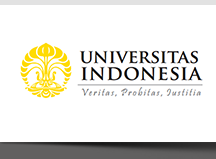Abstract
Artikel ini mendiskusikan fiksionalisasi histori tokoh Sultan Suleyman, Khalifah ke-10 Dinasti Turki Osmani, di dalam sinetron Turki ”Abad Kejayaan”, yang menimbulkan kontroversi. Di dalam teks sejarah, Sultan Suleyman dikenal sebagai pemimpin Turki Osmani terlama dan yang paling berhasil membawa Turki Osmani ke puncak masa kejayaan. Sultan Suleyman yang memerintah pada 1520-1566 juga mendapat julukan Suleyman Al-Kanuni (Suleyman Law-giver) karena kemampuannya membangun undang-undang yang diterapkan di Kekhalifahan Turki Osmani selama berabad-abad. Namun, di dalam sinetron ”Abad Kejayaan” Sultan Suleyman digambarkan sebagai tokoh laki-laki yang disibukkan oleh istri dan selir-selir yang saling berkonflik memperebutkan perhatiannya. Sinetron ini juga menampilkan latar kehidupan di wilayah harem dengan penampilan perempuan-perempuan berbusana terbuka dan adegan-adegan erotis, yang sangat bertentangan dengan etika Islam. Gambaran tokoh Sultan Suleyman Al-Kanuni sangat jauh dari horizon ekspektasi audiens. Dengan teori resepsi, artikel ini bertujuan untuk menganalisis secara kritis horizon ekpektasi dari audiens dan preferred reading dari kreator sinetron ”Abad Kejayaan”. Temuan dari penelitian ini adalah sinetron ”Abad Kejayaan” merupakan karya fiksional yang menimbulkan ketegangan, karena adanya jarak yang jauh antara horizon ekspektasi dan preferred reading.
References
Ahmed, Syed Z. (2001). The zenith of an empire: the glory of the Suleiman the Magnificent and the law giver. A.E.R. Publications.
Althusser, Louis. (1984). Ideology and Ideological State Aparatuses. London: Verso.
Atıl, Esin (1987). The Age of Sultan Süleyman the Magnificent. Washington, D.C.: National Gallery of Art.
Baran, Zeyno. (2010). Torn Country: Turkey between Secularism and Islamism. (Hoover Institution Press Publication)
Bourdieu. (1989). “Social Space and Symbolic Power”.” Sociological Theory, Vol. 7, No. 1 (Spring, 1989), hal. 14-25
Carney, Joshua, dkk. (2014). The turkish touch: neo-ottoman hegemony and turkish television in the Middle East. Arab Media Report.
Creswell, J.W., & Creswell, J.D. (2018). Research Design: Qualitative, Quantitative,
and Mixed Methods Approaches. (Fifth edition). Los Angeles: SAGE.
Christomy, T. dan Yuwono, U. ed. ((2004). Semiotika Budaya. Depok: Pusat Penelitian Kemasyarakatan dan Budaya Direktorat Riset dan Pengabdian Masyarakat Universitas Indonesia.
Doğramacı, Esra. (2014). A Revisionist Turkish Identity: Power, Religion and Ethnicity as Ottoman Identity in the Turkish series Muhteşem Yüzyıl. Disertasi. LSE, London School of Economics and Political Science ("LSE").https://www.lse.ac.uk/media-and- communications/asset/documents/research/msc dissertations/2013/113- Dogramaci.pdf
Hafiez, Muhammad Ryan, Andi Suwirta, dan Achmad Iriyadi. (2017). “Suleiman the Magnificent, Sang Penakluk Timur dan Barat: Kajian Politik Ekspansi Turki
Utsmani, 1520-1566 Masehi.” Journal of Islamic Studies in Indonesia and Southeast Asia, 2 (1), 17-30.
Hall, Stuart (1980): 'Encoding/decoding', di dalam Centre for Contemporary Cultural Studies (Ed.): Culture, Media, Language. London: Hutchinson.
Holub, Robert C. (2013). Reception Theory: A Critical Introduction. London and New York: Methuen. (edisi e-book).
Hoijer, B. (2008). “Ontological Assumptions and Generalizations in Qualitative (Audience) Research”. European Journal of Communication 23 (3): 275-295
Iser, Wolfgang. (1974). The Implied Reader: Patterns of Communication in Prose Fiction from Bunyan to Beckett. Baltimore and London: The Johns Hopkins University Press.
--------(1978). The Act of Reading: A Theory of Aesthetic Response. London and
Henley: The Johns Hopkins University Press.
--------(1990). “Fictionalizing: The Anthropological Dimension of Literary
Fiction” in New Literary History. Vol. 21, No. 4 The Johns Hopkins University Press. hlm. 939-955
--------. (2000). The Range of Interpretation. New York: Columbia University Press
Isom, Christine-Verhaaren. (2006). “Royal French Women in the Ottoman Sultans' Harem: The Political Uses of Fabricated Accounts from the Sixteenth to the
Twenty-First Century.” Journal of World History, Jun., 2006, Vol. 17, No. 2 (Jun., 2006), Hal.159-196. University of Hawai'i Press on behalf of World History Association URL: https://www.jstor.org/stable/20079373
Jauss, Hans Robert. (1982). Toward an Aesthetic of Reception. Trans.
Timothy Bahti. Minneapolis: University of Minnesota Press.
Jensen & Nicholas W Jankowski. (eds.). (2020). A Handbook of Qualitative Methodologies for Mass Communication Research. London: Routledge.
Khan, Musa dan Pembecioğlu, Nilufer. (2019). “International Audience’s Perception
about the Turkish TV Serial “The Magnificent Century” In the Context of Portrayal of
History and Women.” Global Media Journal TR Edition.
Martin, J. (2018). “Audiences and Reception Theory”
http://www.sociologymadesimple.com/wpcontent/uploads/2018/07/juliemartinaudience sreception.pdf. diakses: 27/01/2021.
McRobbie, Angela (2000, 1991)). Feminism and youth culture. 2nd ed.
Houndmills, Basingstoke, Hampshire: Macmillan Press.
Padmopuspito (1993). “Asia. Teori Resepsi dan Penerapannya.” Jurnal Diksi.
No.2-17/ Mei 1993
Pierce, Leslie P. (1993). The Imperial Harem: Women and Sovereignty in the Ottoman Empire. New York: Oxford University Press
Stierli, Karlheinz. (1980). “The Reading of Fictional Texts”, dalam Susan R.
Suleiman and Inge Crosman (eds.), The Reader in the Text. New Jersey: Princeton University Press.
Toksabay, Ece dan Villelabeitia, Ibon. (2011). “Sultan's TV drama opens Turkish
divide on religion,” https://www.reuters.com/article/us-turkey-ottoman-drama- idUSTRE7173GA20110208
Yatim, Badri. (2011). Sejarah Peradaban Islam: Dirassah Islamiyah II. Jakarta: Raja Grafindo Persada.
Yang, Hongmei dan Qi, Suling. (2017). “Translators’ Subjectivity in Literary Translation: From the Perspective of Reader-Reception Theory.” Prosiding di dalamAdvances in Social Science, Education and Humanities Research (ASSEHR), dan International Conference on Social Science (ICoSS 2017)
Sumber internet
-----“Demam Drama Turki.” https://www.femina.co.id/trending-topic/drama-turki.
8/1/2016, diakses pada 01/03/2022.
-----“Magnificent Century’ on a new show. Huriyet Daily News, 01/11/2014. https://www.hurriyetdailynews.com/magnificent-century-on--a-new-show--
-----“Soal King Suleiman, ANTV akan Temui Tokoh dan Ormas Islam” http://www.republika.co.id, 14/12/26, diakses Jumat, 29/02/ 2022.
------“KPI Kaji Penghentian Film King Suleiman” http://www.republika.co.id/berita/ nasional/umum/14/12/26, diakses 15/02/ 2022.
-------“KPI Tegur dan Minta Adanya Perbaikan Substansi Tayangan “Abad Kejayaan” ANTV, 27/01/ 2015, diakses pada 15/02/2022------- Abad Kejayaan. www.merdeka.com, diakses, 29/02/2022
Simanjuntak, Laurencius. KPI: Sinetron 'Abad Kejayaan' ANTV tak perhatikan norma kesusilaan. http://www.merdeka.com/Selasa, 27 Januari 2015 11:12, diakses 29/02/2022.
Recommended Citation
Solihat, Ade
(2022)
"ANALISIS RESEPSI TERHADAP FIKSIONALISASI HISTORI TOKOH SULEYMAN AL-KANUNI DI DALAM SINETRON TURKI “ABAD KEJAYAAN”,"
Multikultura: Vol. 1:
No.
2, Article 7.
DOI: 10.7454/multikultura.v1i2.1095
Available at:
https://scholarhub.ui.ac.id/multikultura/vol1/iss2/7
Included in
Other Languages, Societies, and Cultures Commons, Philosophy Commons, South and Southeast Asian Languages and Societies Commons

